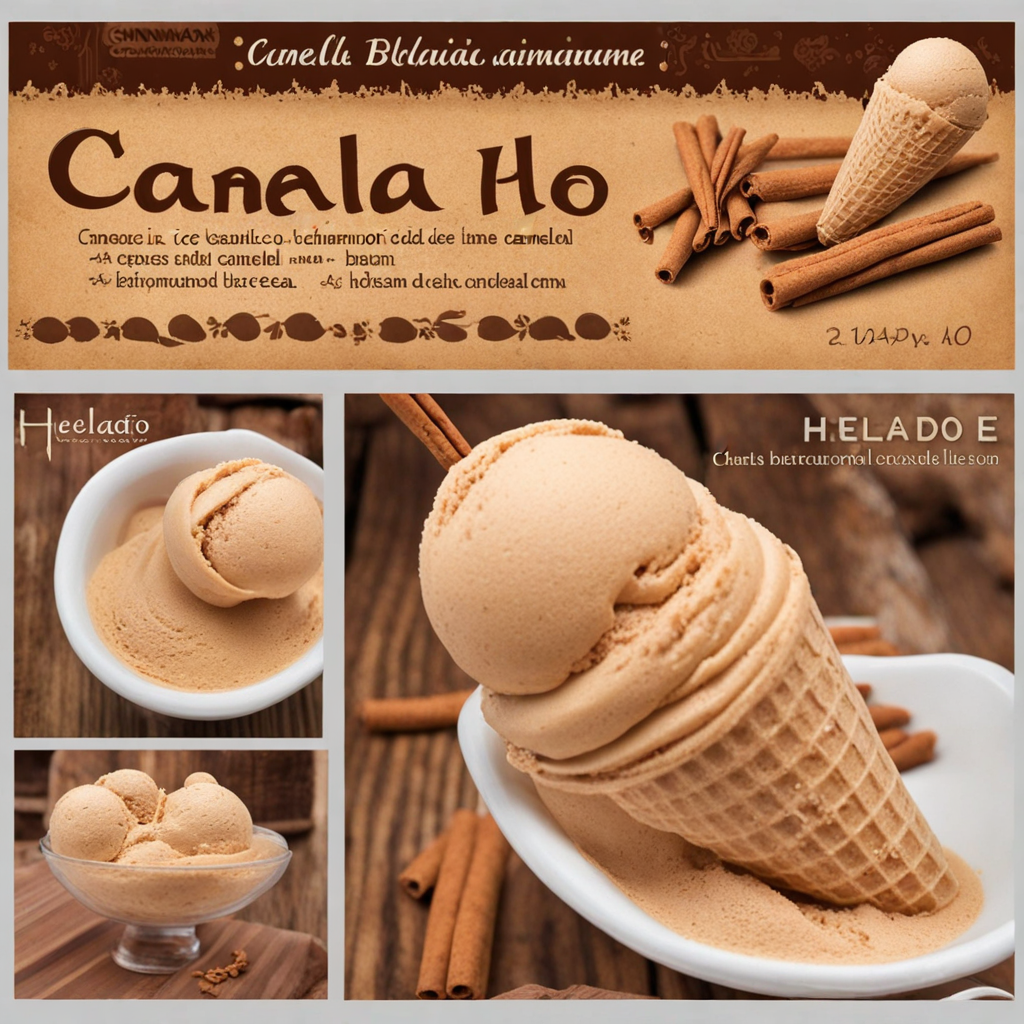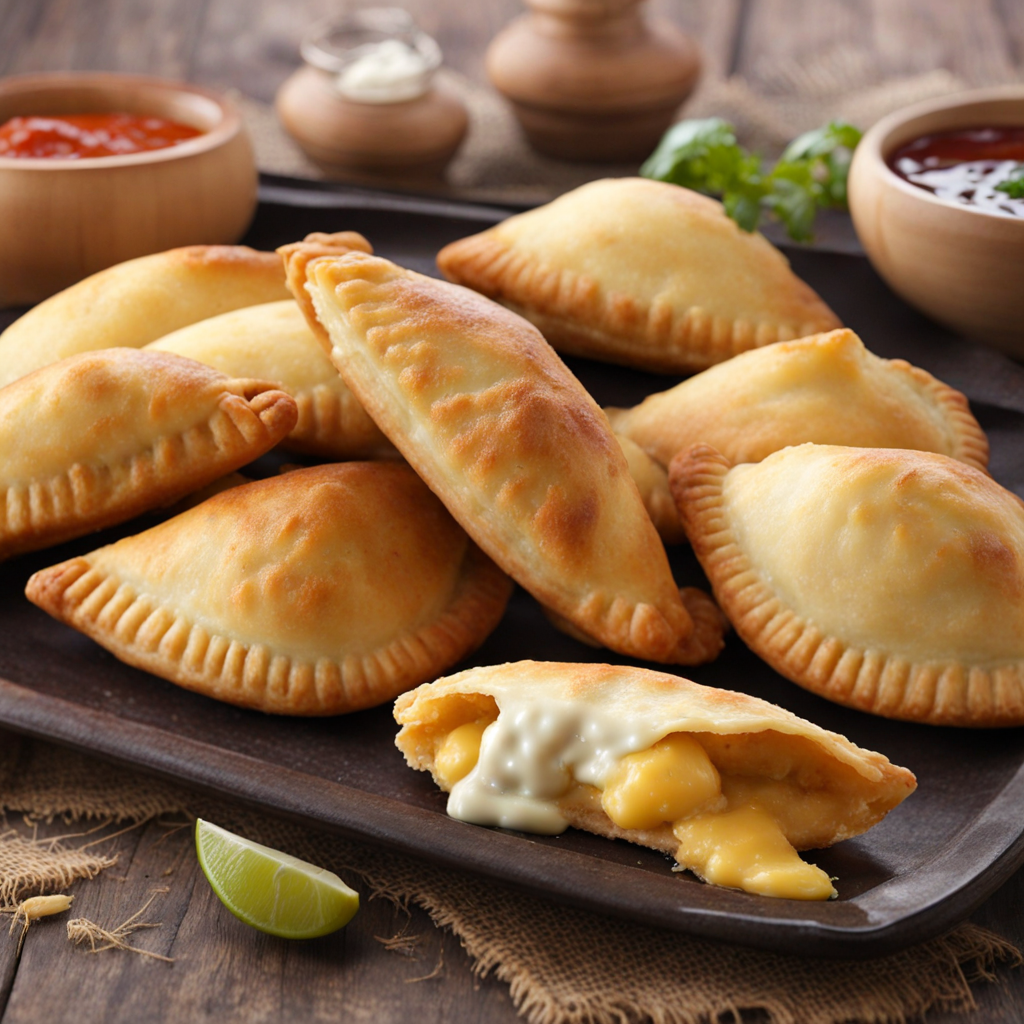Helado de Canela
Helado de Canela is a delightful Bolivian ice cream that encapsulates the warm and aromatic essence of cinnamon, a spice that is deeply rooted in the culinary traditions of the Andes. This unique dessert is made from a base of rich, creamy milk, which is infused with the distinct flavor of cinnamon. The process begins with simmering milk and sugar together, allowing the cinnamon sticks to steep, releasing their fragrant oils into the mixture. The result is a comforting and subtly sweet ice cream that tantalizes the palate with every scoop. What sets Helado de Canela apart from other ice creams is its ability to balance the creaminess with the warm, spicy notes of cinnamon. It is often enjoyed on its own or paired with traditional Bolivian pastries, such as salteñas or empanadas, enhancing the overall tasting experience. The icy texture melts in your mouth, leaving behind a lingering warmth that makes it an ideal treat for both hot and cool days. As you savor it, you can also discern hints of vanilla and sometimes even a touch of nutmeg, which complement the cinnamon beautifully. This delightful dessert not only showcases the rich flavors of Bolivia but also serves as a reminder of the country's diverse cultural heritage. Helado de Canela is a popular choice at local markets and festivals, where families gather to enjoy this sweet indulgence together. Whether you’re wandering through the vibrant streets of La Paz or relaxing in the lush valleys of Cochabamba, indulging in a scoop of Helado de Canela is an experience that will transport your taste buds to the heart of Bolivian cuisine.
How It Became This Dish
Helado de Canela: A Sweet Legacy from Bolivia Origins and Historical Context Helado de Canela, or cinnamon ice cream, is a beloved dessert hailing from the highlands of Bolivia, particularly the vibrant city of La Paz. This traditional treat is not merely a sweet indulgence; it embodies a rich tapestry of cultural influences and historical narratives that reflect the country’s diverse heritage. The origins of helado de canela can be traced back to the pre-Columbian era, when the indigenous Aymara and Quechua peoples inhabited the Andean region. These communities had a profound understanding of local ingredients and flavors, often using them in both culinary and medicinal contexts. While ice cream as we know it today did not exist, ancient peoples utilized techniques for freezing and preserving foods, including concoctions made with snow or ice mixed with fruits, herbs, and spices. The introduction of cinnamon (or "canela") to the region is believed to date back to the Spanish colonial period in the 16th century. Cinnamon, a spice with historical significance in Europe, was brought to the Americas by colonizers and quickly became integrated into local culinary practices. The fusion of indigenous ingredients and European techniques led to the evolution of helado de canela, which showcases the unique flavors of Bolivia. Cultural Significance Helado de canela holds a special place in Bolivian culture. It is not just a dessert; it is a symbol of community and tradition. In Bolivia, ice cream vendors are a common sight in bustling markets and on street corners, often serving a variety of flavors, but helado de canela remains one of the most cherished. Its preparation and consumption bring people together, creating a social event where families and friends gather to enjoy this refreshing treat. This dessert is particularly popular during festivals and celebrations. For instance, during the annual Carnival of Oruro, one of the most significant festivities in Bolivia, helado de canela is often enjoyed by locals and visitors alike. The act of sharing this dessert during such occasions underscores its role in fostering community bonds and cultural identity. Additionally, helado de canela is often associated with the colder months in the Andean highlands, where the temperature can drop significantly. The warmth and comforting spice of cinnamon provide a delightful contrast to the chill in the air, making it a beloved choice for many Bolivians seeking comfort and familiarity. Development Over Time As Bolivia has evolved through centuries of cultural interchange and globalization, so too has helado de canela. While the basic recipe remains rooted in tradition, variations have emerged to suit modern tastes and preferences. Traditional helado de canela is made with simple ingredients: milk, sugar, and cinnamon, often enhanced with vanilla or other flavorings. In the 20th century, the advent of refrigeration technology transformed the way ice cream was produced and consumed. Ice cream parlors began to emerge in urban areas, where people could enjoy a wider variety of flavors, including innovative takes on helado de canela. Today, you might find this classic flavor presented in artisanal forms, featuring organic ingredients, or paired with contemporary sweets like chocolate or fruit toppings. Moreover, the rise of Bolivia’s international culinary scene has led to the rediscovery and reinvention of traditional desserts. Chefs and food artisans are increasingly drawing on indigenous ingredients and techniques to craft modern interpretations of helado de canela, ensuring that it remains relevant in the global culinary landscape. Preparation and Ingredients The traditional preparation of helado de canela is a labor of love. It begins with simmering milk and adding generous amounts of cinnamon sticks, allowing the flavors to meld together. Sugar is then incorporated to balance the spice, and sometimes, a hint of vanilla is added for depth. The mixture is cooled and churned to create a creamy, smooth texture. Today, many Bolivians still uphold the artisanal methods of preparation, often using old family recipes that have been passed down through generations. However, with the influence of modern culinary practices, some variations may incorporate egg yolks for a richer custard base or even alternative milks to accommodate dietary preferences. Global Recognition and Influence In recent years, helado de canela has gained recognition beyond Bolivia’s borders. Food enthusiasts and travelers seeking authentic culinary experiences have introduced this traditional flavor to international palates. Its warm spice and creamy texture have garnered attention in food festivals and cultural events celebrating Latin American cuisine. Furthermore, the popularity of Bolivian cuisine as a whole has increased, with global interest in its unique flavors and ingredients. Helado de canela stands as a testament to the resilience and adaptability of traditional foods amidst a rapidly changing culinary world. Conclusion Helado de canela is more than just a delicious ice cream flavor; it is a cultural artifact that captures the essence of Bolivia’s history, community, and culinary evolution. From its indigenous roots to its contemporary interpretations, this sweet treat continues to delight and connect people across generations. As Bolivia embraces its rich heritage while navigating the complexities of modern life, helado de canela remains a cherished symbol of tradition, resilience, and the sweet joys of shared experiences. Whether enjoyed on a bustling street corner or at a festive gathering, helado de canela invites everyone to savor a taste of Bolivia’s vibrant culture, one spoonful at a time.
You may like
Discover local flavors from Bolivia







